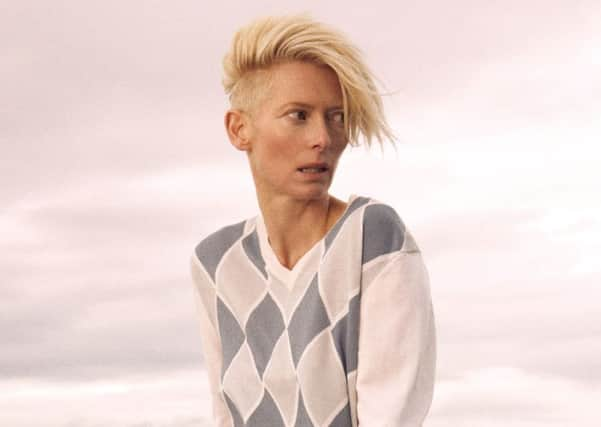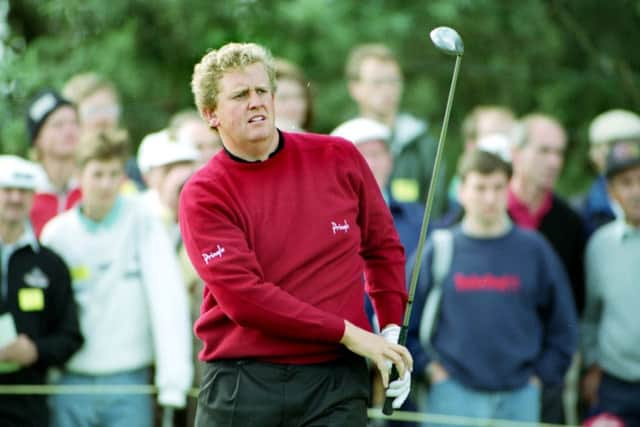Scotland’s most iconic fashion brands


JOHNSTONS OF ELGIN
The finest cloths have been devised and manufactured at the Johnstons mill on the banks of the River Lossie for more than 200 years.
Since then, just two families have been at the helm of one of Scotland’s most successful luxury brands, the Johnstons and the Harrisons.


Advertisement
Hide AdIt pioneered weaving of fine yarns, including Vicuna and Cashmere, and has long specialised in the making of estate tweeds. Its knitwear is manufactured in the Borders.
Johnstons is to open its flagship store in Bond Street, London, next month. www.johnstonscashmere.com
PRINGLE
From elegant twin sets in the 1950s to jumpers sported by football casuals during the 1980s, Pringle’s appeal is as wide as it is long.
Founded in 1815 in the Scottish Borders, Pringle first made hosiery and underwear but in the 19th century became one of the first firms to produce luxury knitwear.
Pringle later went on to introduce its signature Argyle intarsia designs and pioneered, quite daringly, pink cashmere for men.
The brand became a household name when Pringle of Scotland became a major golf sponsor, with players including Nick Faldo and Colin Montgomerie sporting the garments on the green.
Advertisement
Hide AdThe company was bought in 2000 amid deep losses by a Hong Kong firm with manufacturing moved to Asia.
However, some garments are still hand finished in the Borders to allow the valuable “Produced in Scotland” label to be attached. www.pringlescotland.com
HARRIS TWEED
Advertisement
Hide AdNot just a fabric, but more like an economic and social movement in the Hebrides.
Weaving skills of islanders were forged into a tweed industry around the 1840s, when the Dunmore family, who owned Harris at the time, asked crofters to product a cloth for the fashionable market.
Now protected by law, Harris Tweed is defined as tweed which has been hand woven by the islanders at their homes in the Outer Hebrides, finished in the islands of Harris, Lewis, North Uist, Benbecula, South Uist and Barra and their several purtenances (The Outer Hebrides) and made from pure virgin wool dyed and spun in the Outer Hebrides.
Harris Tweed remains very much celebrated by the fashion industry with firms including Chanel, Hugo Boss, Paul Smith and Nike buying up the historic fabric. www.harristweed.org
CROMBIE
The company behind the iconic Crombie overcoat, loved by mods, Royals and gentlemen, started life in Aberdeen at the hands of a father-and-son team.
John and James Crombie set up their first woollen mill at Cothal Mills in 1805, where they produced luxury cloth from cheviot, merino and cashmere wool to sell on to merchants and tailors.
Advertisement
Hide AdCrombie set out on horseback to sell his wares and by the 1850s had won a quality awards from Queen Victoria at the Great Exhibition.
Such was Crombie’s success that in 1870, during the Prussian siege of Paris, an order was famously sent by hot air balloon to secure delivery of the legendary cloth.
Advertisement
Hide AdThe firm supplied ‘Rebel Grey’ cloth for the Confederate Army in the American Civil War and military uniforms during both world wars. Its also enjoyed strong sales in Russia.
Famous wearers of the Crombie include King George VI, Winston Churchill, Cary Grant and John F Kennedy. The Prince of Wales can also be seen sporting one of the famous overcoats. www.crombie.co.uk
LYLE & SCOTT
With a loan of £800, Lyle and Scott was founded in Hawick in the Borders in 1874.
Originally spinning high quality underwear, the firm enjoyed rapid expansion under William Lyle’s favourite motto: Good Work Makes More Work.
In 1926, it moved into knitted outerwear and the firm’s turnover doubled in two years.
Almost overnight its status in the high fashion world was secured when managing director Charles Oliver went into partnership with Christian Dior in 1954 to produce joint-branded cashmere.
Advertisement
Hide AdOther collaborations have included Chanel, Yves Saint Laurent and Liberty.
Lyle and Scott’s golf range was launched in the 1960s along with the eagle motif, a nod to the golfing achievement of two shots under par. Its association with the game again kept Lyle and Scott on the world stage. Bing Crosby was a fan of its jumpers and comedian Ronnie Corbett was to make them one of his trademarks.
Advertisement
Hide AdIn the 1980s, Lyle and Scott – like Pringle – fell into favour with the football casual who sought out quality, sharp, expensive clothing for their Saturday afternoon on the terraces. www.lyleandscott.com